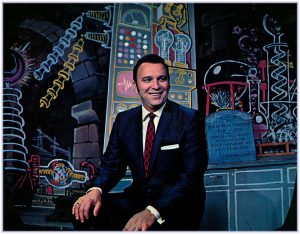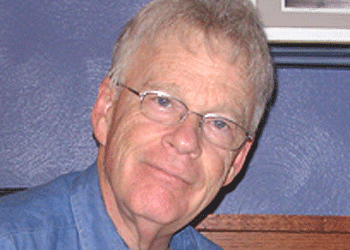From the NERW Archives
Yup, we’ve been doing this a long time now, and so we’re digging back into the vaults for a look at what NERW was covering one, five, ten, fifteen and – where available – twenty years ago this week, or thereabouts.
Note that the column appeared on an erratic schedule in its earliest years as “New England Radio Watch,” and didn’t go to a regular weekly schedule until 1997.
One Year Ago: July 27, 2015
*News from the NEW YORK market: at SBS’ WPAT-FM (93.1 Paterson), Luis Jimenez’ brief run in mornings didn’t end well. The former WSKQ-FM (97.9) morning powerhouse came back to SBS in February, eight years after jumping to rival Univision, but now he’s gone again from both his local and syndicated shows, firing off a tweet calling SBS management “Hitler wannabees” and promising to return with an online show this fall.
As Syracuse’s WOLF (1490) gets ready to host a reunion of its old top-40 days August 8, the venerable AM station has a new format. After spending nearly a year silent, the former Radio Disney affiliate signed back on this past spring as a simulcast of FM sister “The Dinosaur,” but now Craig Fox has flipped 1490 to Fox Sports Radio. WOLF is the third all-sports AM in the market, competing with ESPN on Galaxy’s WTLA (1200/97.7) and CBS Sports Radio on Cumulus’ WSKO (1260).
*In MASSACHUSETTS, the “V Brothers” are reuniting at Boston’s iHeart cluster as Frankie Vinci, aka “Frankie V,” comes home to take over mornings at WJMN (94.5). The Framingham native had been doing mornings at iHeart’s KHTS (93.3) in San Diego, and he’ll keep doing that show remotely for now while he fills the JAM’N slot left vacant by the departure of Ramiro Torres. Morning co-host Ashlee Feldman stays in place, and Frankie’s brother Mikey V will be right down the hall doing production and nights at WXKS-FM (Kiss 108).
*There’s a new country simulcast coming to central PENNSYLVANIA in September, thanks to Kristin Cantrell’s 7 Mountains Media. After buying several station clusters in the region, 7 Mountains is combining WJUN-FM (92.5 Mexico), WLZS (106.1 Beaver Springs) and WHUN (106.3 Mount Union) as “Big Foot Country,” keeping the existing country format on WJUN and replacing oldies on WLZS and WHUN. The new stations will use several existing 7 Mountains staffers: Jeff Stevens (now PD of WIEZ 670 in Lewistown) will be PD and morning co-host alongside Mary Lee; WHUN’s Rick Hamilton will handle afternoons and there’s a search underway for a midday host.
Five Years Ago: July 25, 2011
*One of NEW JERSEY‘s largest broadcast groups has a new name and new management this week. Ever since Oaktree Capital, parent company of Townsquare Media (the former Regent Broadcasting), took Millennium Radio New Jersey under its wing, rumors had been flying about the New Jersey stations becoming part of the Townsquare umbrella.
 Those rumors became reality last week, placing the 11 Millennium signals in Trenton and on the shore under the Townsquare banner, where they join other NERW-land Townsquare clusters in Buffalo, Utica and Albany, as well as a slew of small-market Townsquare outlets elsewhere in the country. Those rumors became reality last week, placing the 11 Millennium signals in Trenton and on the shore under the Townsquare banner, where they join other NERW-land Townsquare clusters in Buffalo, Utica and Albany, as well as a slew of small-market Townsquare outlets elsewhere in the country.
The move to Townsquare pushes Millennium president/CEO Bill Sauer out of that post and into an “interim” consulting role; replacing him at the helm of the New Jersey stations (WKXW “New Jersey 101.5” in Trenton; WOBM/WADB, WOBM-FM, WJLK and WCHR in Monmouth-Ocean and WENJ/WENJ-FM, WFPG, WSJO and WPUR in Atlantic City) is Zoe Burdine-Fly, who’d been GM of the Regent/Townsquare stations in Flint, Michigan.
 *The top story in NEW YORK this week, once again, is at 101.9 on the dial, where NERW was first to tell you that the new calls on the former WRXP would be WEMP. Those calls showed up on the air at 5 PM on Thursday (July 21), a full six days after NERW followers on Facebook and Twitter first heard about them. *The top story in NEW YORK this week, once again, is at 101.9 on the dial, where NERW was first to tell you that the new calls on the former WRXP would be WEMP. Those calls showed up on the air at 5 PM on Thursday (July 21), a full six days after NERW followers on Facebook and Twitter first heard about them.
But the new calls, so far, haven’t brought with them the full-fledged new format that’s been rumored for Merlin Media’s signal. Instead, the week brought more of the “FM New” AC programming that’s been occupying 101.9 (and 101.1 in Chicago, newly renamed WWWN) since Merlin took over from Emmis, killing off WRXP’s alternative format. (There’s alternative rock back on the New York airwaves now, at least for HD Radio owners; Clear Channel quietly flipped its HD2 channel on WAXQ 104.3 to its “Alt Project” national format last week.)
*Out on Long Island, WNYG (1440) has become The Station That Will Not Die. Widely given up for dead after Multicultural Broadcasting bought it and took it silent to improve sister signal WNSW (1430 Newark), the little AM signal at 1440 returned to the airwaves last week after a year of silence. WNYG’s old Babylon site is gone now, and instead the station is licensed to Medford, out to the east. The new WNYG is a 1000-watt daytimer diplexed off one tower of WLIM (1580 Patchogue), and it’s running Spanish-language religious programming from new owner Radio Cantico Nuevo.
Ten Years Ago: July 24, 2006
The Citadel corporate mandate to install the syndicated Opie & Anthony show at most of its rock stations nationwide landed especially hard in western NEW YORK this week. With only one logical place in the Buffalo market for the O&A show – modern rock “Edge” WEDG (103.3) – this morning’s arrival of Opie & Anthony meant a big move for one of the Queen City’s top-rated (and longest-running) morning shows. After 11 years on WEDG (and its predecessor, WUFX, “the Fox”), Ted Shredd and Tom Ragan will move their “Shredd and Ragan” show to the 3-7 PM slot beginning this afternoon. The duo used their last morning show Friday to gamely promote the move, blowing up their alarm clocks on the air in a nice bit of radio theater.
WEDG managers are trying to put a positive spin on the move, telling the Buffalo News that Shredd & Ragan may find a bigger audience in the less-competitive afternoon hours – but in a city with no huge afternoon rush hour keeping listeners in their cars, can Shredd & Ragan find the kind of audience loyalty and listening time they’ve enjoyed in the morning?
The message boards were also quick to notice one area Citadel market that wasn’t getting “infected” with the “O&A virus” – in Syracuse, where rocker WAQX (95.7 Manlius) would seem to be an obvious candidate for the show, the morning team of Beaner and Ken is being left intact, perhaps because it’s also being simulcast to Citadel’s WRAX in Birmingham, Alabama. Whatever the reason, “95X” lost a Syracuse competitor last week, as Clear Channel euthanized “The Dog” and flipped WWDG (105.1 DeRuyter) from modern rock to hot AC, focusing on modern AC hits from the 90s and the last few years and rebranding the station as “Nova 105.1” (or perhaps “nova 105-one,” if you’re the graphic artist who designed the logo.)
Up in CANADA, the AM-to-FM juggernaut marches on in a big way this week. In Halifax, Nova Scotia, Maritime Broadcasting System (MBS) launched the FM replacement for CHNS (960) at noon on Wednesday, pulling the plug on the oldies format heard on AM in favor of classic rock as “89.9 Hal FM. With the debut of the new format on CHNS-FM, the AM signal will go dark within 90 days. Over on Prince Edward Island, we hear that Newcap has begun testing its second FM signal. In addition to new CHTN-FM (Ocean 100.3), “K-Rock 105.5” is now being heard, announcing calls CKQK. (There’s still no timeline for MBS’ CFCY 630 to complete its move to FM in Charlottetown, leaving PEI with no full-power AM signals.)
Fifteen Years Ago: July 25, 2001
Clear Channel has been awfully aggressive lately when it comes to moving its signature talk talent to its own radio stations, but in the Upper Valley of NEW HAMPSHIRE, one small station owner is fighting back. As we told you last week, Bob Vinikoor’s WNTK-FM (99.7 New London) lost the Rush Limbaugh and Dr. Dean Edell shows, both syndicated by Clear Channel’s Premiere, to Clear Channel-owned WTSL (1400 Lebanon), with the programs moving to their new homes on Thursday (July 19). But Vinikoor didn’t take the move lightly; he tells NERW he spent the last few months trying to persuade Premiere it was making a mistake by moving from WNTK, whose FM signal covers much of western New Hampshire, to the little 1000-watt WTSL, which is strong in Lebanon and nearby Hanover but decidedly a distant signal in New London and Newport, more than 30 miles away. Vinikoor’s efforts included a videotape showing the scenery in his coverage area — and the weak WTSL signal on his van’s radio. The tape was returned, unwatched, by Premiere executives, leading Vinikoor to try to get it to Limbaugh himself. And when it became clear that the battle was lost, Vinikoor switched to a new plan: hiring former gubernatorial candidate Deborah “Arnie” Arneson to fill Limbaugh’s old shift on WNTK. Arneson’s show debuted Thursday on the station, bringing Vinikoor media attention that included Manchester’s WMUR-TV and several area newspapers.
Some good news for the Entercom cluster here in Rochester: the FCC this week approved the allocation shift that will transform 93.3A Avon, 20 miles south of Rochester, into 93.3A Fairport, just a few miles east of Rochester. In practical terms, it means a real city signal for WBBF-FM, once the paperwork is filed that will move its antenna from a rimshot tower down in Livingston County to the WBEE-FM (92.5 Rochester) stick on Five Mile Line Road in Penfield. (On a historical note, that tower was the original “WBBF-FM,” since that was the first call on what’s now WBEE-FM back in 1961 – and on 101.3 MHz back then, to boot!)
In PENNSYLVANIA, Greater Media gets new calls to go with its new “Mix” format on Philadelphia’s 95.7: WEJM becomes WMWX, a call last seen in the region on what’s now WMEK (99.9) up in Auburn, Maine. Harrisburg’s new Clear Channel “Kiss” changes calls from WWKL-FM (99.3) to WHKF, as long expected, while up in Erie, 102.3 changes again from WLKK to WQHZ-FM, just a few weeks after trading its longtime WJET calls with WLKK(AM) on 1400.
Twenty Years Ago: July 30, 1996
Nostalgia is big on the airwaves in Boston this summer. As part of Barry O’Brien’s big WVBF reunion on August 10, former ‘VBF jocks have been invited to take airshifts for the day on 70s-rocker WEGQ 93.7. Tape will be rolling here at NERW headquarters. The hi-fi VCR will also see action this coming Saturday, August 3, when the 3-8pm slot on WRCA (1330) formerly occupied by the late Bill Marlowe will be home to a Marlowe remembrance hosted by Ron Della Chiesa of WGBH. And from the rumor mill: Greater Media’s WMEX (1150) in Boston did a brief stab at bringing back the oldies one Saturday night a few weeks ago, and while it hasn’t been heard since (the station is back to its usual leased-time Spanish), rumor has it new jingles are being cut. 1150 tried doing oldies when it got the WMEX calls a decade ago, and of course the calls themselves were part of the “Wimmex” top-40 legend on 1510 (now WNRB) in the ’60s and early ’70s.
Also from the history files: Longtime (1951-1983) WBZ radio and TV weatherman Don Kent was honored a few weeks ago with the dedication of Don Kent State Park, a small portion of the Wollaston Beach Reservation in Quincy. The park sits on the site of the old Kent’s Carpetland store, from which Kent first broadcast the weather for WJDA (1300) in Quincy in the late 40s. Kent now lives in New Hampshire, and his forecasts are still heard on WQRC (99.9) on Cape Cod and WEMJ (1490) in Laconia NH.
On the fringes of New England: M Street reports the former WMJR (107.1) in Hudson Falls NY, some 50 miles north of Albany and just a few miles west of the Vermont line, has become WHTR, “Hot 107.1.” I’ll check that one out next weekend as I hit the road for Buffalo and Syracuse. And a familiar sound in the southeast Connecticut area is about to go FM-only… WLNG in Sag Harbor, Long Island is selling its AM 1600 operation to Unity Broadcasting of New York City. Unity will presumably shut down WLNG(AM), allowing its flagship WWRL 1600 New York to expand its pattern a bit to the east (and since the WWRL transmitter is in Secaucus NJ, west of NYC, that’s good news for WWRL). Unity bought silent WQQW 1590 Waterbury CT earlier this year for the same reason. The good news is that the very distinctive, jingle-laden sound of WLNG will continue to be heard in glorious mono on 92.1 FM. Also down that way, the former WMRW 98.5 Westhampton LI has become WLRI, after a brief stint with the WLIR calls that now live on its simulcast 92.7 in Garden City LI. And 92.7’s old WDRE calls are now in Philadelphia on the former WIBF 103.9 Jenkintown. Scorecards are for sale in the lobby… |




 We outlined the details of the deal in a
We outlined the details of the deal in a  *At the other end of PENNSYLVANIA, the death of Bill Cardille on Thursday morning hit hard for generations of Pittsburghers. Cardille filled all kinds of roles on the western Pennsylvania airwaves for more than 60 years, but none more beloved than “Chilly Billy,” the iconic horror host of “Chiller Theater” on WIIC/WPXI (Channel 11). In that role, he did more than just introduce movies. He helped fund the original “Night of the Living Dead,” and his persona influenced Pittsburgh native Joe Flaherty to create SCTV’s “Monster Chiller Horror Theater.”
*At the other end of PENNSYLVANIA, the death of Bill Cardille on Thursday morning hit hard for generations of Pittsburghers. Cardille filled all kinds of roles on the western Pennsylvania airwaves for more than 60 years, but none more beloved than “Chilly Billy,” the iconic horror host of “Chiller Theater” on WIIC/WPXI (Channel 11). In that role, he did more than just introduce movies. He helped fund the original “Night of the Living Dead,” and his persona influenced Pittsburgh native Joe Flaherty to create SCTV’s “Monster Chiller Horror Theater.”

 Those rumors became reality last week, placing the 11 Millennium signals in Trenton and on the shore under the Townsquare banner, where they join other NERW-land Townsquare clusters in Buffalo, Utica and Albany, as well as a slew of small-market Townsquare outlets elsewhere in the country.
Those rumors became reality last week, placing the 11 Millennium signals in Trenton and on the shore under the Townsquare banner, where they join other NERW-land Townsquare clusters in Buffalo, Utica and Albany, as well as a slew of small-market Townsquare outlets elsewhere in the country.




